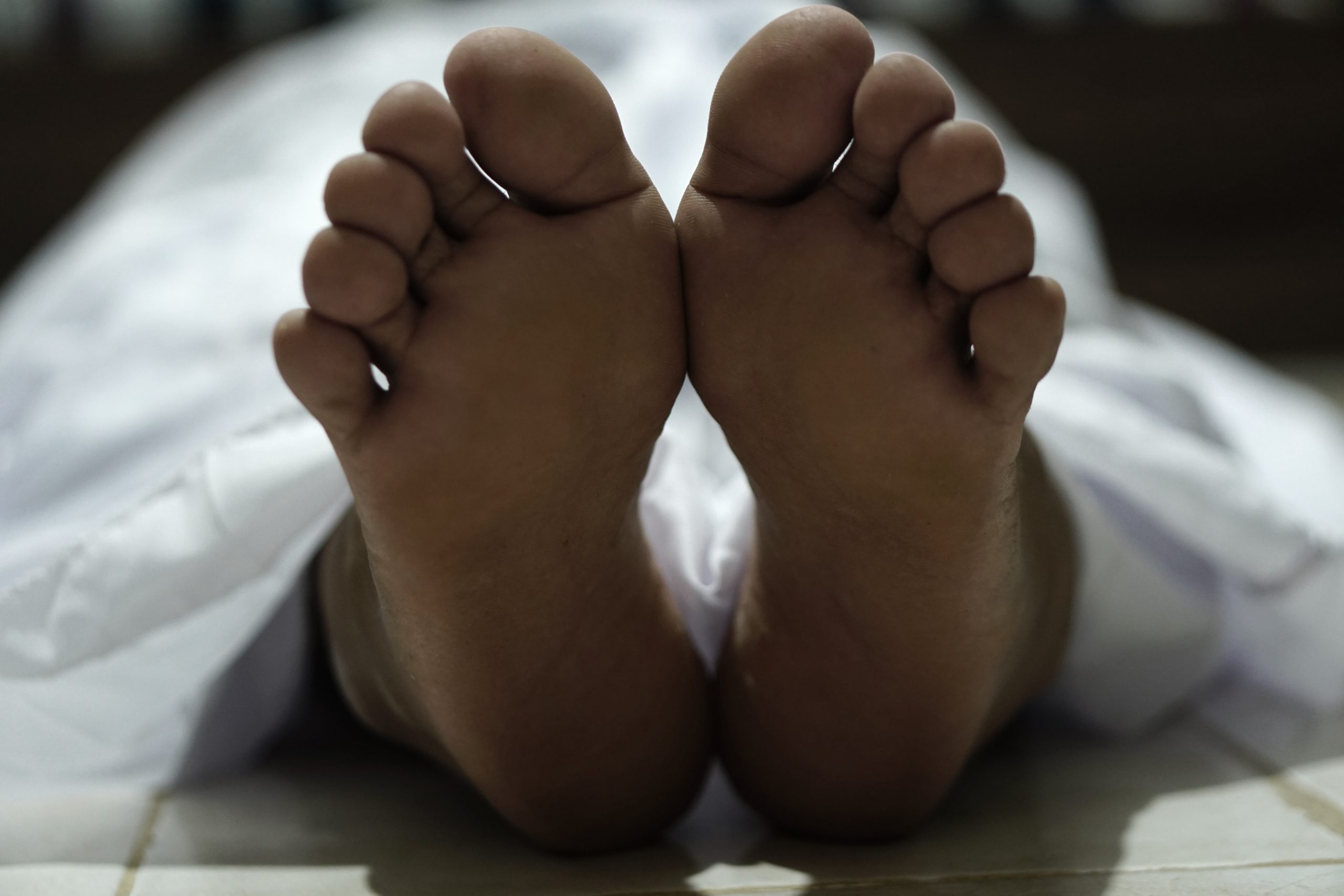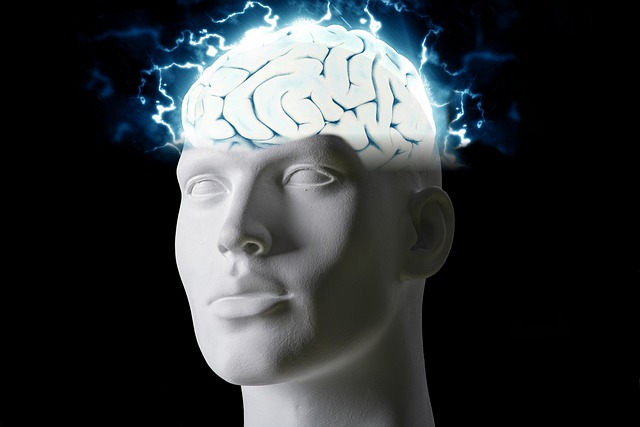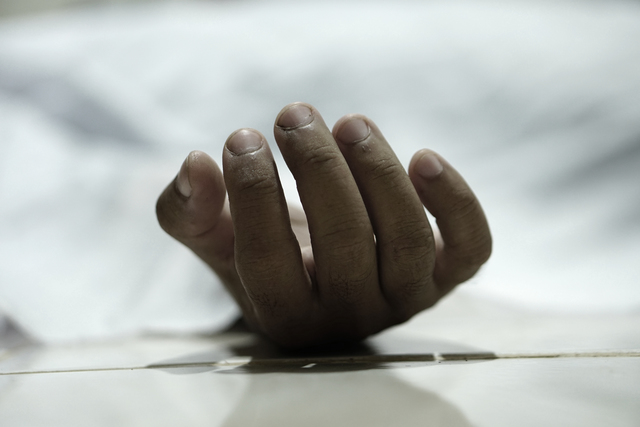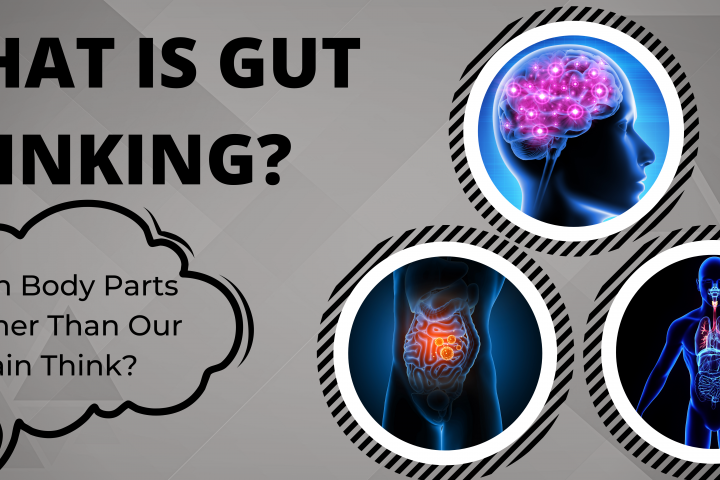Ever imagined what happens to the human body after death? No, we are not talking about funeral activities but what happens inside the dead body. The human body is made up of various organs, each one having a significant role to play in the survival of a person. There are many cases registered where people have claimed to have seen a dead person making noise or movements and much more. In this article, we will try to unravel such mysteries. So, stay tuned for some thrill!
What happens to human organs after death?
A human heart starts beating when a person is born and stops after death. There are many theories doing rounds on the internet that the human brain stays active even after death.
Neuroscientists, at the University of Tartu, Estonia, recorded the activity of a dying 87-year-old patient with epilepsy. They found the rhythmic wave pattern similar to dreaming and meditation. They used continuous electroencephalography (EEG) to detect seizures and treat the patient.
However, the patient died during the procedure because of a heart attack and multiple seizures. But, this procedure allowed scientists to record the brain activity of a dying person for the first time.
Dr. Ajmal Zemmar, a neurosurgeon at the University of Louisville, US, said – “We measured 900 seconds of brain activity around the time of death and set a specific focus to investigate what happened in the 30 seconds before and after the heart stopped beating.”
He further added – “Just before and after the heart stopped working, we saw changes in a specific band of neural oscillations, so-called gamma oscillations, but also in others such as delta, theta, alpha, and beta oscillations.”
Brain oscillations, commonly known as brain waves are a pattern of rhythmic activity noticed in the brain of a living person. This study is the first of its kind but, a similar gamma oscillation was noticed in research conducted on rats. This reveals a possibility that during death, the brain organizes biological responses which could be preserved across species.
In a similar situation, Neuroscientists have recorded the activity of a dying human brain and discovered rhythmic brain wave patterns around the time of death that are similar to those occurring during dreaming, memory recall, and meditation. Scientists believe that the brain replays the dying person’s life as if giving the person the last opportunity to relive his/her life. In a lifetime an individual goes through various moments of joy, love, hatred, etc., and the memories that he created come back for the last time as a flashback before his eyes.
Unscientific incidents
These were some scientific facts, researched and found out over a period of time. Apart from this, there are certain cases registered that lack scientific explanations.
In one instance, a person whose heart stopped beating claimed to have listened to the voices of the people surrounding him, and he was later brought back to life. One more similar incident happened where the person was believed to have met a dead relative and disclosed information only the deceased was aware of.
There are countless stories of people who have come back from a near-death experience and have talked about their experiences from what they call the afterlife.
The brain activity of a dead pig
In a recent study, researchers have found that the brain of a pig can be revived hours after death in terms of cellular or circulation functions. Researchers extracted the brain four hours after the pig was slaughtered for meat, then the brain was injected with a synthetic fluid, called BrainEX.
Four hours after the pig’s death, they connected the vasculature of the brain to circulate a uniquely formulated solution they developed to preserve brain tissue, utilizing a system. They found neural cell integrity was preserved, and certain neuronal, glial, and vascular cell functionality was restored.
As per the reports many basic cellular functions, once thought to cease seconds or minutes after oxygen and blood flow cease, were observed in the brain.
“The intact brain of a large mammal retains a previously underappreciated capacity for restoration of circulation and certain molecular and cellular activities multiple hours after circulatory arrest,” said senior author Nenad Sestan, professor of neuroscience, comparative medicine, genetics, and psychiatry.
However, researchers also stressed that the treated brain lacked any recognizable global electrical signals associated with normal brain function.
Human organs, especially the brain have always remained a mystery for scientists. Everyone is different hence, the experiences a person’s body goes through after death are also unique.
In our next segment, we will be discussing such rare happenings recorded in the human body after death.
Movement in the dead body
There are many stories of dead people sitting is doing rounds on the internet, where people claimed to have seen the dead body making a move, believing it a paranormal activity. Usually, when something like this spreads, people instantly accept it without cross-checking the facts. Well, what is believed to be an act of a ghost is nothing but the body muscles receiving signals to contract or relax.
Adenosine triphosphate (ATP) is the compound responsible for providing energy to living cells, one of which is muscle contraction. Once it is depleted, then the body will make its final movement which can be seen in the twitching of muscles, fingers clenching, hands moving, or toes wiggling.
Another responsible factor for muscle contraction could be how the person died, If there is excess calcium, a temperature change, or, in some cases, violent death or even electrocution, the body can demonstrate such movements. This process normally occurs between the time of death and rigor mortis.
So, next time someone tries scaring you by saying that they have seen a dead body rise up, you know what to tell them.
Corpses making noise
Yes. you read it right, cadavers can moan and make other noises as well. We are not talking about zombies, but corpses make noises because the air left in the windpipe escapes and vibrates the vocal chord, producing such sounds.
Corpses don’t scream or shout but can make noise involuntarily, this usually happens when the morticians are turning or prepping bodies. Another reason is that there are a few gases that build up in the body and are released through the windpipe.
The illusion of growth – Do hair and nails grow after a person dies?
Often people claimed to have noticed the signs of growth in cadavers. As horrifying as this may sound, the truth behind this completely opposite of the rumor. When a person dies, the oxygen supply of the body stops at that very moment, preventing further production of glucose in the liver, which stimulates hair and nail growth.
Now, this is perhaps what actually happened, the skin around the nail and hair areas, retracts because of the dehydration, making it appear as if hair and nail have grown up. When in reality, the size remains the same as before.
Similarly the same is noticed in men with chest hair and stubble, the skin surrounding the hair shrinks, making hair looks more prominent. Therefore, it seems that there is an increase in hair growth.
Do you know that there are rituals performed after the death of a person?

Check out our article to know more about this.
Coffin birth

Have you ever heard of a dead woman who gave birth? Yes, there are cases where a dead woman gave birth. Crazy, right? There are various cases of coffin birth registered in different parts of the world. Basically, what happens is that the pressure of gases building up within the deceased pushes the fetus out.
This usually happened during the times when medicine was still in the stage of development. A case of coffin birth came in limelight in January 2018, in South Africa where a woman who died abruptly shocked people at the funeral home when they saw that she had given birth inside her coffin. The woman was nine months pregnant at the time of her death.
Discoloration of the skin
Discoloration happened when the heart stopped beating and is no longer agitating the blood, heavy red blood cells sink through the serum by the action of gravity. Blood settles to the lower or dependent portion of the body, making a body appear to have lost color.
This usually starts after 20 minutes after the death but is usually not observable by the human eye until two hours after death.
Self-digestion
The body begins decomposing after the death of a person, the process in which the body starts to digest itself is known as autolysis. The process of decomposition is divided into 4 stages namely – Hypostasis, Algor Mortis, Rigor Mortis, and Putrefaction.
Soon, after the heart stops beating, cells of the body become deprived of oxygen. Enzymes start to digest cell membranes and then leak out as the cells break down. This usually begins in the liver, which is rich in enzymes, and in the brain, which has high water content.
Damaged blood cells begin to spill out of broken vessels and, aided by gravity, settle in the capillaries and small veins, discoloring the skin.
Our body hosts huge numbers of bacteria, and each and every surface of the body provides a habitat for different types of microbial systems. After death, the whole cadaveric ecosystem comes surfaces and spreads out to different parts of the body.
By far the largest of these communities resides in the gut, which is home to trillions of bacteria of hundreds or perhaps thousands of different species.
In August 2014, forensic scientist Gulnaz Javan of Alabama State University in Montgomery and her colleagues published the very first study of what they have called the thanatomicrobiome (from Thanatos, the Greek word for ‘death’).
The immune system stops working, leaving all the microbes to spread freely throughout the body.
This usually begins in the gut, at the junction between the small and large intestines. Left unchecked, our gut bacteria begin to digest the intestines – and then the surrounding tissues – from the inside out.
Javan and her team took samples of liver, spleen, brain, heart, and blood from 11 cadavers, between 20 and 240 hours after death. They used two different state-of-the-art DNA sequencing technologies, combined with bioinformatics, to analyze and compare the bacterial content of each sample.
The research claims that the bacteria takes about 20 hours to reach the liver and around 58 hours to spread to all the organs from which samples were taken.
Decomposition can be heavily influenced by many variables referred to as taphonomic factors. These factors can speed up or slow down the decomposition process. For example, heat and insect activity will speed up the process, while cold temperatures or wrapping a body in plastic will slow it down.
For buried human bodies, the acidity or alkalinity of the soil is also an important factor influencing bone preservation. Other factors too play an important role, whether the body was burned (cremated), or deposited in water will also have an impact.
The study of the dead may look gruesome but can prove to be of great help in medicine. We are still learning new things about what happens to the organs in a dead body, whether we talk about the brain or any other organ. Researchers are continuously working to explore more about the world after death so as to increase the lifetime value of humans.
You might also like –






